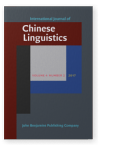Vol. 4:2 (2017) ► pp.257–272
Three Korean transcription systems for Mandarin loanwords
A comparative study
This paper investigates the factors involved in the adaptation of loanwords and how these factors influence each other through a case study of three systems of transcription for Mandarin loanwords in Korean. The result of this study demonstrates that perception, phonology, and source-language orthography are all important factors in the three systems of transcription. This study provides empirical evidence to what causes speakers of the same native language – in our case, Korean – to propose different adapted forms for the same source input and argues that variation in adaption patterns can be viewed as results of different constraints and different rankings of the same constraints. Last, this study invites researchers to pay more attention to the role of borrowers in the hope of building a more robust model of loanword adaptation.
Article outline
- 1.Introduction
- 2.Overview
- 3.The transcription of Mandarin loanwords in Korean
- 3.1Korean government’s transcription (KGT)
- 3.2 Eom (1996)
- 3.3 Eom (2002)
- 4.Discussion
- 4.1The factors in loanword adaptation
- 4.2The variation in adaption patterns
- 4.2.1The inventory of constraints
- 4.2.2The ranking of constraints
- 5.Concluding remarks
- Acknowledgements
- Notes
-
References
